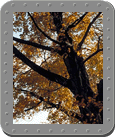|
|||||||

|
| A tree branch is an example of a cantilever because it carries a "load" of leaves and wood and is supported at one end by a tree trunk. Click on the image for larger view. |
What It Is (continued)
After the free exploration, perhaps at the second session, pose the following
challenges, using 50 straws and 50 pins:
Bridges
Cantilevers
Start with one straw taped to the wall or tabletop with strong tape. Other straws may be pinned (or fastened with clips) to this straw and may rest against the wall or tabletop but may not be taped.
The question of rules and what is fair inevitably arises in these challenges. This is an important question, as it forms the basis for scientific objectivity and fair testing.
For the bridges, questions such as, "Can you anchor the ends?" "What kind of supports can you put between the ends?" and "Where is it fair to put the weights?" often arise. You may want to define some of these rules ahead of time. For instance, you might tell students that they can't anchor the ends of their bridges and that intermediate supports cannot touch the ground. Leaving these rules to later discussion might leave some students feeling like they were cheated. On the other hand, having the students discuss and decide where and how it is fair to place weights leads to important thinking about stresses and torques on their structures.
For building out from the wall or tabletop, questions such as, "Are the structures allowed to droop, and if so, how much?" and "Where is it fair to hang the weights?" often arise. The place where weights are hung is even more important for cantilevers. When we hear students protest "it's not fair" when a group hangs their weight in close to the wall or table, we know that they have a key part in the understanding of torque; that is, that the effect depends on the distance of the weight from the pivot.

